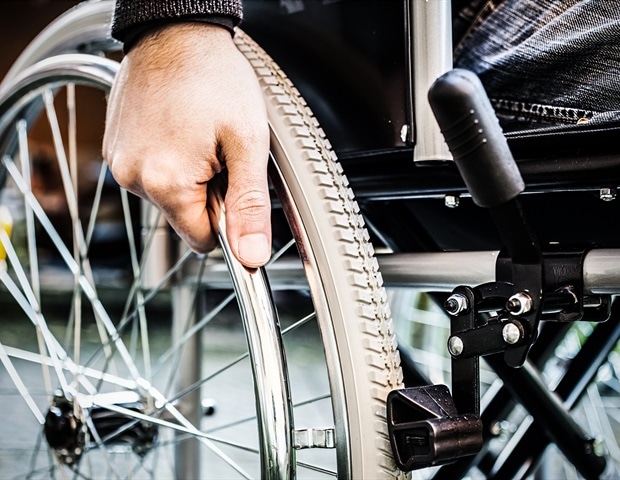
Girls are extra probably than males to expertise mobility limitations that would profit from the usage of mobility aids however are a lot much less probably to make use of them when wanted, in accordance with a brand new examine from researchers at UCL and the London College of Hygiene and Tropical Medication (LSHTM).
Although the prevalence of incapacity continues to rise among the many over fifties, many individuals wouldn’t have entry to the mobility aids – akin to canes, walkers, or wheelchairs – which can be important for sustaining independence and social engagement.
Printed in The Lancet Public Well being, the examine explored which demographics is perhaps kind of probably to make use of mobility aids once they would profit from them.
The crew analysed survey responses from 12,080 individuals aged 50-89 over 13 years (2006-2019), utilizing information from the English Longitudinal Examine of Ageing.
Throughout that point, 8,432 individuals reported having some mobility problem. Of those, 5,102 (61%) skilled unmet want no less than as soon as (not utilizing a mobility help regardless of experiencing problem), whereas 3,330 (39%) reported utilizing a mobility help no less than as soon as.
Girls have been 50% extra probably than males to transition from not needing a mobility help to unmet want standing throughout the examine interval, however have been 20% much less prone to transition from unmet want to make use of.
The authors of the analysis say this highlights a gender inequality that must be addressed to enhance an neglected space of public well being.
Although unmet want for mobility aids like strolling sticks and wheelchairs is a prevalent world well being challenge, it is unclear how non-clinical traits like age, gender, or socioeconomic place would possibly make folks extra prone to expertise unmet want.
Our evaluation suggests that there’s a clear gender hole in entry to mobility aids. Although our information did not verify the explanation why individuals weren’t utilizing mobility aids, different analysis tells us that girls are sometimes extra probably than males to face obstacles akin to price limitations on account of well-documented revenue disparities between genders.
Many mobility aids are designed for males slightly than girls, which we predict could also be an element. Utilizing mobility aids may also make a incapacity seen, which may influence the security and stigma skilled by girls particularly. There is a crucial want for additional analysis to establish and break down the limitations stopping girls from accessing mobility aids that might enhance their high quality of life.”
Jamie Danemayer, first writer of the examine from UCL Laptop Science and UCL’s World Incapacity Innovation Hub
The examine additionally documented different demographic components related to a better probability of needing a mobility help, together with decrease academic attainment, unemployment or incapacity, and decrease wealth. Nevertheless, these demographics have been additionally extra probably to make use of mobility aids in the event that they wanted one, additional underlining that gender is a key determinant of unmet want.
Earlier analysis from the UCL World Incapacity Innovation Hub discovered price is the largest barrier to mobility help use for each genders.
Professor Cathy Holloway, an writer of the examine from UCL Laptop Science and UCL’s World Incapacity Innovation Hub, mentioned: “Not gaining access to mobility aids when an individual wants one can have a huge impact on their independence, well-being and high quality of life. Our evaluation suggests that girls particularly, no matter different components akin to schooling and employment standing, aren’t getting the help that they want.
“I count on that the explanation why girls are much less probably than males to make use of mobility aids in the event that they want one are quite a few and the general image might be complicated. Additional analysis on this space would assist to establish the place limitations will be eliminated.”
Professor Shereen Hussein, senior writer of the examine and lead of the Social Care Group on the London College of Hygiene & Tropical Medication, mentioned: “This examine underscores the crucial want to deal with gender disparities in entry to mobility aids, an important but usually neglected element of public well being and incapacity inclusion.
“The analysis gives compelling proof of gender disparities in accessing assistive know-how, suggesting that price, design bias, and social stigma are prone to disproportionally have an effect on girls. This underscores the necessity for inclusive, gender-sensitive approaches within the design, manufacturing and inclusivity of assistive applied sciences. These insights supply a priceless basis for nationwide and world policymakers to prioritize gender fairness in ageing and incapacity coverage developments.”
This examine was funded by UK Support as a part of the World Incapacity Innovation Hub’s AT2030 programme.
The total record of mobility aids included within the survey was: a buggy or scooter; a cane or strolling stick; a Zimmer body or walker; a guide wheelchair; an electrical wheelchair; or elbow crutches.
Members have been thought of to have a decrease mobility limitation and mobility help want in the event that they reported problem with a number of of the next mobility actions: strolling 100 yards, climbing a flight of stairs with out resting, kneeling or crouching, and/or getting up from a chair after sitting for lengthy durations of time.
Supply:
Journal reference:
Danemayer, J., et al. (2024). Demographic, socioeconomic, and social limitations to make use of of mobility assistive merchandise: a multistate evaluation of the English Longitudinal Examine of Ageing. The Lancet Public Well being. doi.org/10.1016/s2468-2667(24)00243-3.
